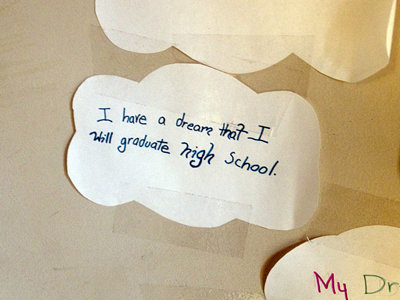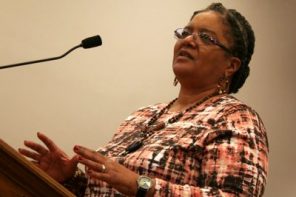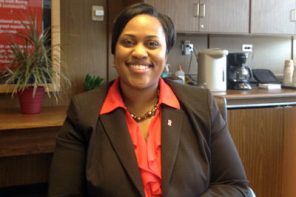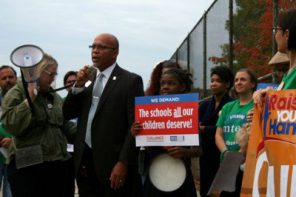Recently, Milwaukee Journal Sentinel K-12 education reporter Erin Richards announced that she would be taking some time away from Milwaukee on a Spencer Fellowship from the Columbia School of Journalism.
Which is awesome news for her, though somewhat disappointing for those of us who enjoy her work here.
The fellowship will give Richards time to work on stories – and maybe a book? – about school voucher programs, including the effects those programs have on communities and students in those communities.
I have something for her, something that I talk about as often as I can, but something which I don’t find much discussion of in the literature about school voucher programs.
I brought it up a couple of weeks ago, in fact, at a public listening session held by the Milwaukee Public Schools. They’re working on a new strategic plan, and over the course of February and March, the district sought input from people on a wide variety of areas critical to its future success.
One thing the district thought important to fixing what’s wrong with the city’s high schools was alumni engagement. Many MPS high schools have long and proud traditions of turning out smart, involved and loyal graduates who go on to do great things for this city. If there were a way to tap more deeply into that alumni community, the district reasoned, and re-connect those men and women with the high schools they graduated from, the door would open for everything from guest speakers to endowed scholarships to mentoring programs.
But what about the engagement of our current students? I asked. We’re well into our second generation of students who have no sense of loyalty or school pride, our second generation of alumni who are leaving the system with no particular connection to their high schools. These young men and women will be of little use in any kind of alumni engagement scheme unless something changes in this city and district to help students – or force students – to be more loyal to their schools.
This is happening because Milwaukee has an inordinately high student mobility rate. That is, a significant number of students are switching schools at times other than when they are elected to, like leaving mid-year or changing schools between grades when they should be continuing.
I see it in my own MPS high school classroom where, at this moment in the school year, my classes are now about one-third students who weren’t at my school in September. My class size hasn’t changed, though, because a third of the students I started the year with now go someplace else.
When a student goes to two or three or six or seven high schools – it happens! I have met those kids! – they don’t build a whole lot of school spirit. They’re not on the football team or president of the math club or treasurer of the student council. They don’t make lifetime friends and forge lasting relationships with teachers or other adults. They aren’t likely to come back to the school they graduated from to be mentors the way MPS wants. And they don’t excel academically while they’re in school.
I ran the numbers for MPS in 2012 to find that students who switch schools score much worse than their peers on state tests. In 2010, the federal government’s General Accounting office found the same thing in a report on students nationwide, that “students who changed schools more frequently tended to have lower scores on standardized reading and math tests and to drop out of school at higher rates.”
My classroom is not anomalous: In 2012, I found that over 30 percent of MPS students every year change schools when they are not supposed to. I counted summer transfers, too; the district says that 15 percent of students that year moved during the school year itself.
There are many reasons why students move, from being kicked out of one school to changing where they live. But many students also move because they – or their parents – think that they can do better in the marketplace.
Milwaukee is home to a near 30-year experiment with school vouchers, charters and in-district choice. This city, more than any other city in the country, has a real education marketplace, with multiple “brands” and stiff competition among them for customers. Kids in school today are the children of parents who themselves spent their school years navigating this marketplace which encourages mobility.
Both Milwaukee’s Public Policy Forum and the School Choice Demonstration Project that studied Milwaukee’s voucher schools consistently find high student mobility among voucher schools and between sectors in Milwaukee. A full 3/4 of students who started high school in a voucher school, the SDCP found in its last report a few years ago, left the voucher program entirely, for example.
Loyalty to a school – even to a sector – is no longer a normal thing in Milwaukee. Like many of you, I grew up with no question about where I would go to school. My elementary school band played in the high school auditorium; my middle school band marched at high school football games. I think the cafeteria milk was spiked with 120-proof school spirit.
But today in Milwaukee you don’t see that much at all. Many students, for example, aren’t buying letterman jackets or class rings anymore. Even selling yearbooks is an uphill battle at my school, and lots of other high schools around the district.
I know that this problem is not unique to Milwaukee, and it’s probably not exclusively the fault of our marketplace, as much as I like to blame it. Comparable urban districts have high mobility rates even without a lot of school vouchers – a quick googling turns up annual figures like 30 percent for Minneapolis, 26 percent in Cincinnati, and a staggering 119 percent in St. Louis one recent year. This compares to the GAO’s finding that, nationally, the number is well under 10 percent.
So I guess that’s my challenge to Erin Richards while on her fellowship. What effect, exactly, does a voucher program and marketplace like here in Milwaukee have on mobility? And more than that, on school spirit and loyalty?
Because if MPS is banking on a strong alumni program to help its high schools, something needs to change in schools now to create those loyal graduates. As long as this city remains a marketplace, I fear that kind of school pride is never coming back.


 i evaluate to yes even if there's no image
i evaluate to yes even if there's no image  i evaluate to yes even if there's no image
i evaluate to yes even if there's no image  i evaluate to yes even if there's no image
i evaluate to yes even if there's no image  i evaluate to yes even if there's no image
i evaluate to yes even if there's no image  i evaluate to yes even if there's no image
i evaluate to yes even if there's no image  i evaluate to yes even if there's no image
i evaluate to yes even if there's no image 